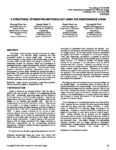
|
A Structural Optimization Methodology Using the Independence Axiom
Lee K. W., Yi J. W., Lee H. L., Park G.
1st International Conference on Axiomatic Design, 2000
The Design Axioms provide a general framework for design methodologies. The axiomatic design framework has been successfully applied to various design tasks. However, the axiomatic design is rarely utilized in the detailed design process of structures when the optimization technology is carried out. The relationship between the axiomatic design and optimization is investigated and the Logical Decomposition method is developed for a systematic structural optimization. The entire optimization process is modified to satisfy the Independence Axiom. In the decomposition process, design variables are grouped according to sensitivities. The sensitivities are evaluated by the Analysis of Variance (ANOVA) to avoid considering only local values. The developed method is verified by examples such as the twenty-five member transmission tower and the two-bay-six-story frame.
|
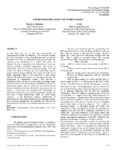
|
Anthropometric Design of Workstations
Helander M. G., Lin L.
1st International Conference on Axiomatic Design, 2000
In this study, the use of AD was demonstrated for anthropometric design of workplaces. Two examples explore how the formulation of Functional Requirements and Design Parameters can help in conceptualizing design principles and selecting design parameters for a seated work place. To improve the ease of adjustability the Independence Axiom was used to formulate functional requirements with respect to adjustability, and select suitable design parameters. Two case studies were used to illustrate how the methodology can be used to improve design solutions. The results show that use of height adjustable chairs is not necessarily a good design solution. The Information Axiom was then used to calculate the information in adjustability features. This involved a redefinition of the concepts of system range and design range, which are used in AD, and resulted in a modified calculation of information contents. The two axioms fit well with the type of design methodology that has developed in ergonomics over the years. 1. It has been well recognized that formulations of functional requirements are essential to ergonomics design. AD now gives a robust methodology, which may drive design solutions. 2. In Ergonomics design, minimization of information has long been recognized as an important criteria; this is expressed through Fitts’ law and Hick’s law. The less the information the quicker it is to operate and the easier it is to learn.
|
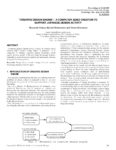
|
“Creative Design Engine”: A Computer Aided Creation to Support Japanese Design Activity
Nakao M., Matsumoto K., Hatamura Y.
1st International Conference on Axiomatic Design, 2000
To support Japanese design activity, software of computer aided creation called “creative design engine” is proposed. It is composed of thinking operation engine, knowledge search engine, decision transfer CAD and design knowledge database. Especially, it assists functional analysis and mechanism selection in designer’s thinking process.
|
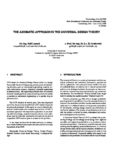
|
The Axiomatic Approach in the Universal Design Theory
Lossack R., Grabowski H.
1st International Conference on Axiomatic Design, 2000
UDT stands for Universal Design Theory which is a design theory with the aim of integrating a broad variety of engineering domains, such as mechanical engineering, material science, information science, chemistry, chemical engineering or pharmaceutics. All engineering domains have in common that their overall goal is to create something new in the world, a machine in mechanical engineering or a specific drug in pharmaceutics.
The UDT consists of several parts. One very important part of the theory is the kernel of the UDT which is based on an axiomatic approach. In this paper we want to describe theoretical fundamentals and practical requirements of UDT’s axiomatic approach. One important requirement we are dealing with is to enlarge, expand or extend a theory. In the traditional view of axiomatic approaches this seems to be almost impossible. UDT wants to give an answer to this problem. In our paper we describe the basic elements, an abstraction model of different abstraction domains and the axiomatic framework of the UDT.
|
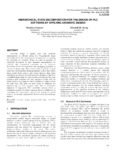
|
Hierarchical State Decomposition for the Design of PLC Software by Applying Axiomatic Design
Schreyer M., Tseng M.
1st International Conference on Axiomatic Design, 2000
Axiomatic design is applied with state transition representation to software design for Programmable Logic Controllers (PLC). By comparing several approaches of applying the principles of axiomatic design in order to generate an equivalent description in state transition representation, we conclude that hierarchical statecharts are an important description of the decomposition and zigzagging procedure at conceptual design stage. This notation helps to identify the goal states and other important design parameters, such as time delays, input signals from sensors, and shared memory data. Since statecharts may provide inherent uncoupled designs we introduce a modified design table for state transition description. The state transition table combines the state transition model with the matrix notation and maps the input conditions to output actions for each state. The table can then easily be employed for implementing the PLC program code. This is particularly important in large-scale PLC controlled systems where a substantial number of control engineers have to collaborate by exchangin the input/output specification among the partial systems. An example is prepared to illustrate the proposed design method.
|
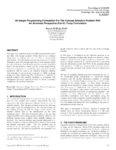
|
An Integer Programming Formulation for the Concept Selection Problem With An Axiomatic Perspective (Part II): Fuzzy Formulation
El-Haik B.
1st International Conference on Axiomatic Design, 2000
This paper is an extension to the formulation presented in Part I and deals with design situations where there is no sufficient information to warrant the use of Part I deterministic optimization. The formulation assumes the existence of a design alternatives pool with enough expertise to score ranking against the selected criteria. Part II builds upon the rationale adopted in Part I for the selection criteria and the integer programming. Therefore, a function of complexity, value, cost and customer satisfaction will be used as an objective function criterion. This rationale is rooted in the concepts of QFD, axiomatic design and value engineering. The formulation is expanded to include technical and assembly feasibility as constraints. The formulation uses some concepts of fuzzy set theory to quantify complexity, a formulation ingredient.
|
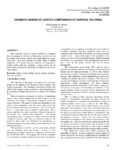
|
Axiomatic Design of Chaotic Components of Surface Textures
Brown C.
1st International Conference on Axiomatic Design, 2000
The axiomatic design of surface textures is considered from the perspective of scales of interaction and the scales of the texture on the surface, which can be represented in an areascale plot. Area-scale analysis by virtual tiling is briefly explained. It is shown how two functions one requiring a smooth surface and one requiring a rough surface can be functionally integrated but physically decoupled by scale on the same surface.
|

|
Productivity, Quality and Decision Theory Based Upon Axiomatic Design
Sohlenius G.
1st International Conference on Axiomatic Design, 2000
The motto of the World Confederation of Productivity Science “Wealth, Prosperity and Peace through Productivity” is an important true statement that is important fully to understand. However, it is also an important imperative to everybody in politics, civil services as well as in industry. Especially in manufacturing industries which have a direct effect on the wealth production, as it creates the tools we need in our daily life, this imperative is evident and very important. Studies have also shown a direct correlation between investment level in a country and the increase in labor productivity. Wealth production also requires that we create and produce the products that are needed in order to improve the welfare. We understand this as quality, “fitness for use”. Today many products are complex systems that have to be designed in order to meet specific customer requirements on functionality, reliability and easy use. Market timing is also very important in order to meet the market windows, which especially for IT products are very short in time. Complexity must be combined with understandability and easy use through skillful engineering. Success requires today that the production processes and systems are designed integrated with the product design. We understand this as concurrent engineering. In order to improve our skill in engineering design we have to understand the fundamental principles of good design and define and use a decision theory for development work. Such a theory can be defined with Axiomatic Design as a base. This can be further developed, taught and used in practice in order to improve productivity and quality in industrial product realization. We have also to distinguish between tools, methods and fundamental principles for engineering design. Products and processes also steadily include more knowledge through the use of information technology. The use of modeling techniques and information technology integrated with such a decision theory is important.
|
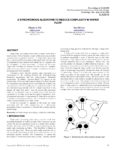
|
A Synchronous Algorithm to Reduce Complexity in Wafer Flow
Oh H. L., Lee T
1st International Conference on Axiomatic Design, 2000
Single-wafer processing yields better on-wafer result than a batch process. This is because a single-wafer processing provides superior process parameter control. A single-wafer processing has to rely on parallel processing at high speed with extensive use of redundant process modules and transporters to compete with the throughput of batch processing. A cluster of the many single-wafer modules and transporters may result in a complex wafer movement, which requires complex coordination of wafer processing and wafer transport. This paper shows that the complex wafer movement is a consequence of the coupling between the wafer-porcessing functional requirement and the wafer-transport functional requirement. By adding “planned delays”, i.e., queues, to the process time of the non-critical process steps, it is shown that the two functional requirements can be successfully de-coupled. The consequences of the de-coupling are (1) a synchronization of the two functional requirements and (2) a drastic reduction in the number of wafer flow paths. Item (1) ensures that processed wafers are transported always in a timely manner and, thus, the consistency in on-wafer result and throughput is improved. Item (2) minimizes the need of orchestration of wafer flow, and allows a consistent wafer process history. The end result is a reduced wafer-to-wafer variation in on-wafer result. A real life example of queuing to de-couple the wafer processing and the wafer transporting in a photo-resist processing system is presented to illustrate the concept and the methodology.
|
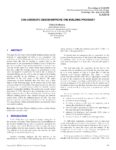
|
Can Axiomatic Design Improve the Building Process?
Sohlenius U.
1st International Conference on Axiomatic Design, 2000
This paper has its focus on the Swedish building industry and the necessity of improvements in order to stay competitive. The central part is the building process, which is defined here as the process from the idea to develop or acquire land to the management of the accomplished building. It can be divided into three parts: product design, product production and product use. The aim of this paper is to clarify where improvements could take place within the building industry in general and in real-estate development in particular. The aim is also to discuss if Axiomatic Design can be used in order to improve the building process especially in the definition of goals and decisions undertaken in the early stages of the process. The paper concentrates on these decisions since they have such a great impact on the following stages of the process and on how high customer value can be reached. The paper can also be seen as a description of a research project within the Swedish research program Competitive Building. The project has recently started (September 1, 1999). The aim of the research project is to seek a higher customer-value, in short and long term as well as a more effective building process than obtained through the methods applied today (within the industrial partner JM AB). The main goal is to generate a normative description of the development of a large project, within residential project development, based on scientific methods.
|
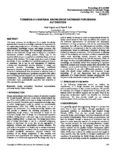
|
Towards a Universal Knowledge Database For Design Automation
Lipson H., Suh N. P.
1st International Conference on Axiomatic Design, 2000
This paper proposes an architecture for a design knowledge database that is aimed at providing a substrate for automation in the engineering design process. We address issues of knowledge representation, knowledge source, and design processes that make use of this knowledge. The knowledge representation is based on the Axiomatic Design view of design as a top-down hierarchical problem solving process. Every step in the decomposition process is regarded as a building block, and is an element of the database. The design step is thus a unit of design knowledge; it may sometimes be a physical component, feature or parameter, but it can be any aggregation of hardware, software and disembodied abstract concepts. A design step primarily contains knowledge describing modifiable parameters, physical behavior and interfaces. All information is stored in a mathematical form, in attempt to alleviate many of the ambiguity and incoherence problems associated with earlier work involving textual, keyword and symbolic representations. Furthermore, the computational representation makes the information more systematically accessible and amenable to fully automated design.
|
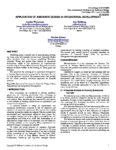
|
Application of Axiomatic Design in Operational Development
Werneman A., Kjellberg A.
1st International Conference on Axiomatic Design, 2000
Prioritizing plays a complex role in workprocesses, forming the vision, goals and strategies for the future. Axiomatic Design offers principles which can improve prioritizing. Therefore, Axiomatic Design was applied when creating an operational development model at one department of semiconductor manufacturing at Ericsson Microelectronics. This particular model includes all fellow-workers in the forming of vision, goals and strategies. The procedure for carrying out an operational development at Ericsson Microelectronics is presented in this paper. One of the most significant results of this procedure was a clear strategy for the future, providing convincing arguments for financial sponsors.
|
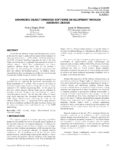
|
Enhancing Object-Oriented Software Development Through Axiomatic Design
Clapis P. J., Hintersteiner J. D.
1st International Conference on Axiomatic Design, 2000
Several formal software design methodologies have evolved in the past few years to guide and document the development of object-oriented software. OMT (Object Modeling Technique) and UML (Universal Modeling Language) are two of the most widely used notations for graphically documenting the design of software objects. While these methodologies can convey significant software design detail, they do not provide a mechanism for documenting the functional requirements that drive the software development process. In addition, object-oriented design does not maintain traceability between functional requirements and the design of software objects.
|
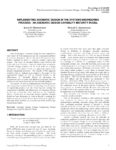
|
Implementing Axiomatic Design in the Systems Engineering Process: An Axiomatic Design Capability Maturity Model
Hintersteiner J. D., Zimmerman R. C.
1st International Conference on Axiomatic Design, 2000
Since its inception, Axiomatic Design has been applied to a wide variety of both engineering and non-engineering problems in numerous disciplines. Recent theoretical developments have further expanded its ability to represent complex engineering systems. The scope of Axiomatic Design usage, however, has traditionally been limited to particular applications or projects. Axiomatic Design, however, can be most useful as a design management tool applied across an engineering organization’s Systems Engineering processes. The benefits of this approach would be both in technical areas related to the quality of the organization’s designs as well as financial benefits in the effectiveness of Axiomatic Design in decreasing the organization’s time to market and ultimately increasing customer satisfaction with more functional and more reliable products. The success of such an implementation effort requires not only integrating Axiomatic Design methodology into all aspects of engineering practice, but also measuring and tracking the organization’s capability and effectiveness in Axiomatic Design, in order to continuously refine and improve the integration efforts. To this end, an Axiomatic Design Capability Maturity Model has been developed, in order to provide a roadmap for implementation as well as coherent metrics that can be applied to determine which activities are successful and which activities may require improvement.
|
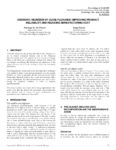
|
Axiomatic Redesign of Guide Flexures: Improving Product Reliability and Reducing Manufacturing Cost
del Puerto S. E., Garcia J.
1st International Conference on Axiomatic Design, 2000
Axiomatic design was the guiding principle in the redesign of a set of motion constraint flexures used in the Micrascan photolithography tool. The original flexures experienced fatigue failure in the field and a replacement solution with infinite life was desired. In addition, the fabrication and inspection of the original flexures was difficult, resulting in high cost and quality fluctuations. The Independence Axiom and system decomposition techniques were applied to derive functional requirements from the existing hardware, in order to guarantee that the redesign would yield a functionally identical solution that would not adversely affect system performance. The Information Axiom was used to select among the proposed solutions in order to improve manufacturability. The chosen solution was tested and is being implemented. Test results show that the desired life expectancy improvement has been obtained with no impact on system performance and procurement cost reduction of about 60%.
|
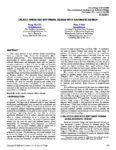
|
Object-Oriented Software Design With Axiomatic Design
Do S. H., Suh N. P.
1st International Conference on Axiomatic Design, 2000
This paper presents a new software design methodology based on axiomatic design theory that incorporates object oriented programming. This methodology overcomes the shortcomings of various software design strategies – extensive software development and debugging times and the need for extensive maintenance – since it is not heuristic and provides basic principles for good software systems. A simple software program is presented here as a case study following the methodology. This case study shows the systematic nature of axiomatic design that has been generalized and can be applied to all different designs. The axiomatic design framework for software overcomes many of the shortcomings of current software design techniques: high maintenance costs, limited reusability, the need for extensive debugging and testing, poor documentation, and limited extensibility of the software, in addition to high development cost of software. The methodology presented in this paper has helped software engineers to improve productivity and reliability.
|
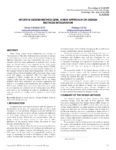
|
Intuitive Design Method (IDM), A New Approach on Design Methods Integration
Cavallucci D., Lutz P.
1st International Conference on Axiomatic Design, 2000
When facing today’s world competition, the concept of “fast innovation” that allies both innovation and time to market, is a surviving matter. In the science of new product design, many different approaches have been formalized, but most of this scientific work has been performed at academic level. In this paper we discuss about a new approach to use these design methods in order to build an “Intuitive Design Method” (IDM), based on previous knowledge and technological background of the company. Based on these acknowledgements a flow chart of Intuitive Design Method building will be presented. Then, a case study will support our approach. This case study has been conducted in M.G.I. Coutier on of the French automotice supplier leader and the presented product will be an intake manifold. Both these theoretical and principal approaches will lead us to a conclusion that demonstrate the usefulness of the IDM model, and that there is no metamethod that can be apply to any company, but a dynamic set of existing basic rules. These rules have to be formalized in order to significantly increase engineers abilities to optimize a total design process.
|
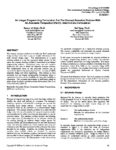
|
An Integer Programming Formulation For The Concept Selection Problem With An Axiomatic Perspective (Part I): Deterministic Formulation
El-Haik B., Yang K.
1st International Conference on Axiomatic Design, 2000
The concept selection problem is to select the ‘best’ conceptual design solution entity from a pool of feasible alternatives in the early concept design stage. The determination of a good selection criteria is a key for successful design release. In this paper, the concept selection problem is formulated as an integer programming problem. Complexity, value, cost and customer satisfaction are used to derive the objective function criterion. The mathematical form of the proposed criterion can be conveniently obtained by borrowing from the concepts of QFD, axiomatic design and value engineering. The criterion is then employed into our integer programming formulation which is expanded to include technical feasibility and assembly feasibility as constraints. The proposed formulation is sufficiently robust to adapt design situations with deterministic information (Part I) or fuzzy information (Part II).
|
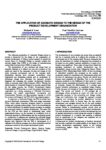
|
The Application of Axiomatic Design to the Design of the Product Development Organization
Lenz R., Cochran D. S.
1st International Conference on Axiomatic Design, 2000
The following application of Axiomatic Design strives to provide a framework for the design of the organization of product development. It follows current research to expand the current theory of Axiomatic Design to complex systems, like software design [Suh (1999)] or the design of manufacturing system [Suh/Cochran/Lima (1998)], to name a few. The development of new products has always been an essential challenge as it reflects not only the evolution of the needs and wants of the customers, but also the change of the entire corporate environment and of the company itself. Implications deriving from increased competition, more fragmented and demanding markets and an acceleration of technology change have alternated the approach towards designing and managing the product development function within a corporate entity [Clark/Fujimoto (1991)]. Whereas the initial intention of Axiomatic Design is to provide a general basis for the design process, the Product Development System Decomposition (PDS) strives to model the product development organization as a whole, consisting of individual information processes and overall organizational functionality and characteristics. However, the decomposition requires to clarify the context and linkage of the PDS within the corporate system. In alignment to Axiomatic Design, the PDS is derived from top-level functional requirements (FRs) and design parameters (DPs), which reflect long-term decisions linked to corporate strategy and corporate system design. Due to the inconsistencies of current definitions it in addition appears necessary to redefine the scope and content of product development. The major FRs for the PDS are then linked to fundamental tasks within organizational theory, e.g. the provision of a sufficient level of functional expertise by differentiation and the continuing growth in productivity by aligning and adjusting the individual design activities by integration [Lawrence/Lorsch (1967), Sobek (1997)]. Beyond such high-level FRs the PDS is decomposed to a sufficient level which is necessary for a direct application and the continuous control of the product development system.
|
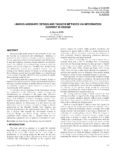
|
Linking Axiomatic Design and Taguchi Methods via Information Content In Design
Kar, A. Kerim
1st International Conference on Axiomatic Design, 2000
Designing high quality products and processes at low cost has become an economical and technological challenge to producers in order to survive in today’s competitive market place. In turn, engineers are forced to find systematic and efficient ways to meet this challenge. Axiomatic Design method is developed to answer this challenge by providing design axioms to place the product and process design on a scientific base. Independence and Information Axioms have provided scientific ways of looking at the decision process in design. In another approach, Robust Design method uses Taguchi’s Quality Loss Function and a new measure of quality, called S/N ratio, to predict the quality from customers’ point of view.
|
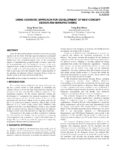
|
Using Axiomatic Approach For Development of New Using Axiomatic Approach For Development of New Concept Design and Manufacturing
Cha, S. W., Moon, Y. R.
1st International Conference on Axiomatic Design, 2000
Since the industrial revolution, industries have been growing rapidly in all the fields. With the rapid development economical efficiency has been emphasized, and economical manufacturing method has been researched abroad. One of the economical aspects of manufacturing is satisfying the customer’s need with the least production cost. The design of a product is the most important factor in the economical efficiency. A bad design will result in high cost and long production time with low quality. Such result comes from the designer’s lack of understanding of the product and subjective design decisions. Design errors are usually occurs in the materialization of the ideas.
|
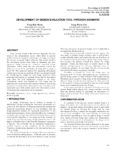
|
Development of Design Evaluation Tool Through Axiomatic
Moon, Y. R., Cha, S. W.
1st International Conference on Axiomatic Design, 2000
There are two axioms in the axiomatic approach. The first axiom is the independence axiom which helps to prevent problems from occurring the initial stages of design resulting in the increase of overall system efficiency. The second axiom is the information axiom which helps to determine the most optimized design among the numerous proposed design. Information Axiom states that the information content was defined in terms of the probability of being able to satisfy a given FR. The proposed method for measuring information content can overcome the problems of the conventional method. By considering the weight for each design parameter when measuring information, an optimum design may be determined even when the total information content is the same. Furthermore, merits and demerits of each design may be understood by observing the information content of each design parameter. As a result places where special care is needed can be numerically seen. With similar method the information content of the functional requirement may be measured.
|
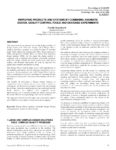
|
Improving Products and Systems By Combining Axiomatic Design, Quality Control-Tools and Designed Experiments
Engelhardt, F.
1st International Conference on Axiomatic Design, 2000
This paper presents an approach for solving design problems. A design analysis with Axiomaitc Design, called Design Object Analysis, describes a product or a system in terms of customer needs (CNs), functional requirements (FRs), design parameters (DPs), and process variables (PVs), as well as their associated design matrices (DMs). In this paper the design analysis is combined with a thorough investigation of possible problems within the design, utilizing the seven quality tools, noise factor analysis, and designed experiments to form an approach for quality improvements and problem solving.
|
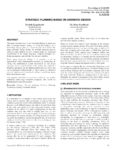
|
Strategic Planning Based on Axiomatic Design
Engelhardt F., Nordlund M.
1st International Conference on Axiomatic Design, 2000
This paper describes how to use Axiomatic Design to create and plan a company-specific strategy. It couuld, for instance, be a technology strategy plan, or a business plan. It is shown that using axiomatic design during the strategic planning process achieves a tight relation between company goals (i.e. functional requirements in the design language), company strategies (i.e. design parameters), and activities (i.e. process variables). When using Axiomatic Design it is possible to do an optimization of the implementation process, i.e. action plan, by solving the mathematical system represented by the design equations. Such an optimization of the action plan minimizes iterations and speeds up the implementation process. Tasks that can be performed independently of other actions are identified and are implemented immediately without considering inputs from other process steps. The approach described is tested and verified in case studies performed within large industrial companies. The results are implemented in industrial practice.
|

|
Axiomatic Design of the Liftgate Wedges In Sports Utility Vehicles
Im, K. H., Parthasarathy, R.
1st International Conference on Axiomatic Design, 2000
The liftgate system of the sports utility vehicles (SUV) or minivans has multiple functional requirements and design parameters. A wedge is a small piece of hardware to stabilize the liftgate especially in cross car direction by providing the load path from the liftgate to the surrounding structures. On the other hand wedge may increase the closing effort due to the reaction force in the swing direction. Furthermore, wedges need to accomodate the gap variation to bridge the liftgate and the body frame. This paper presents the characteristics of two different types of wedges in the axiomatic design viewpoint and their effects on the liftgate system.
|
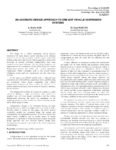
|
An Axiomatic Design Approach To One-DOF Vehicle Suspension Systems
Kar, A. K., Martin, H. E.
1st International Conference on Axiomatic Design, 2000
The design of a vehicle suspension system requires satisfaction of many design aspects including good vibration isolation to secure the occupants comfort, good road-vehicle holding ability and safety. Several vehicle suspension models with structural or actively controlled configurations have been reported in the open literature. The key design objectives are represented by the acceleration of the vehicle body and relative displacement between the vehicle and various suspension components. Other constraints such as the overall system robustness, power and cost requirements are also taken into account. In this paper, two 1-DOF models with a Maxwell type suspension and a Maxwell type suspension with a parallel spring are considered. Mean square acceleration and relative displacement responses of these models are derived for a realistic random road input given in terms of its power spectrum density function.
The optimization problem of suspension systems is usually solved by defining a single performance index which is a weighted sum of mean square acceleration and the relative displacement. However, the results are dependent on the weighting coefficient which is arbitrary; and the solution can not tell us which design is better.
Independence Axiom of the Axiomatic Design can easily distinguish between different designs and can provide an index showing which is better. In this paper, the above derived suspension models are examined using this axiom, and semangularity and reangularity concepts. It has been shown that under certain conditions and in certain range of design parameters, it is possible to obtain decoupled designs. Axiomatic design approach and new relations derived during these investigations may provide a new look at the vehicle suspension system design.
|
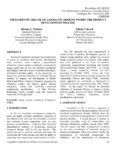
|
Thoughts on the Use of Axiomatic Designs Within the Product Development Process
Mohsen, H. A., Cekecek, E.
1st International Conference on Axiomatic Design, 2000
Increased competitive pressures forced producers of goods to accelerate their product development time, minimize costs, improve organizational efficiencies, reduce product complexity, systematically design goods that are key for customer satisfaction and delights, innovative reuse of current technologies, and improve product quality. In this manuscript, we discuss the potential utilization of Axiomatic Design methods to enhance the development of Failure Modes and Effects Analysis, Parameter diagrams for robustness studies, and improve quality through robustness, testing and enhancing functional requirements specifications. A Line Pressure Regulating System example using this integrated framework will be provided.
|
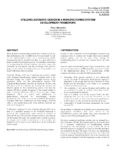
|
Utilizing Axiomatic Design In a Manufacturing System Development Framework
Almstrom, P.
1st International Conference on Axiomatic Design, 2000
Many of today’s manufacturing systems have evolved ad hoc and their performances rely
on skillful shop floor personnel. A study of the implementation phase of a manufacturing
facility reengineering project, revealed that there is a great need for a more systematic
development process. The problems faced today are, among others: the lack of a holistic view
of the system, the availability of inormation, and that knowledge from previous projects
is not reused. Acording to literature, these problems are shared with many other companies.
|
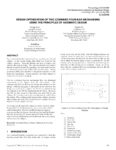
|
Design Optimization of Two Combined Four-Bar Mechanisms Using The Principles of Axiomatic Design
Guo, G., Xu, S., Liu, D.
1st International Conference on Axiomatic Design, 2000
Two combined four-bar mechanisms have two functions: lift and collapse. In the current design,
high effort was found for the collapse function. Axiomatic Design was used to analyze and optimize the current design. The customer domain was mapped into the functional domain by specifying customer needs in terms of functional requirements (FRs) and constraints (Cs). Design parameters (DPs) were identified in the physical domain for each functional requirement. Design matrices were then defined to characterize the product design.
|
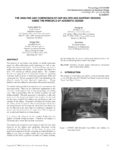
|
The Analysis and Comparison of Cup-Holder and Ashtray Designs Using the Principle of Axiomatic Design
Xu, S., Le, D., Guo, G.
1st International Conference on Axiomatic Design, 2000
The location of cup-holders and ashtray on vehicle instrument panel can affect instrument panel appearance as well as cup-holder and ashtray functionality. Axiomatic Design was used to analyze and compare the designs of cup-holders and ashtray for three 1999 model-year full-size pickup trucks. The customer domain was mapped into the functional domain by specifying customer needs in terms of functional requirements (FRs) and contraints (Cs). Design parameters (DP) were identified in the physical domain for each functional requirement. Design matrices were then defined to characterize the product design.
|
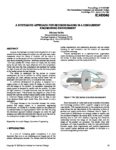
|
A Systematic Approach for Decision Making in a Concurrent Engineering Environment
Sahlin, M.
1st International Conference on Axiomatic Design, 2000
Anyone who has been involved in the introduction of a new product knows that during the project you will pass many major crossroads, where the choice of direction will be crucial to whether or not the project will be a commercial success. It is not only about developing products – hardware, software and services – that best satisfies the market wants and needs, but also about doing the job faster and more effectively than the competition. Those who have the best competence and methods for making the right choices will take the lead, become the dominant players in the market and do the best business. The ability to understand the big picture of product development, so that in addition to making superior products companies can build efficient services around these with an optimized Life Cycle Cost (LCC), is crucial for their success. In traditional development the product is designed for a supply system or the supply system is design as a second step after the design of the product. In concurrent engineering the supply system is designed in parallel with the product. To make the right decisions a complex structure must be handle by the development team. This structure also depends on where in the product life cycle the product/supply system under development is. Axiomatic Design provides principles that can help to take these decisions based upon actual facts, facts related to many parameters. This paper focuses on the interaction between the market, product and supply system in a concurrent engineering environment. An outline of a decision model for the interaction is presented based on ongoing research within this field. By using this structured approach business managers can make the right decisions and obtain the objectives that were set up in the start of the development project within budget and time limits.
|
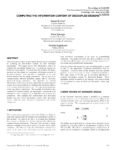
|
Computing the Information Content of Decoupled Designs
Frey, D. D., Jahangir, E., Engelhardt, F.
1st International Conference on Axiomatic Design, 2000
The information content of uncoupled designs can be computed by summing the information content of each functional requirement. This paper proves that information cannot be summed for decoupled designs due to correlation among the functional requirements. To overcome this problem, this paper presents two algorithms for computing information content of decoupled designs. One algorithm is applicable to any joint density function for the design parameters. The second, more computationally efficient algorithm, applies only to uniformly distributed design parameters. The algorithm for uniform distributions is based on a recursive procedure for computing the volume of a convex polytope in n dimensional real space where n is the number of design parameters. An engineering application of the algorithms is presented. The example demonstrates that summing information content can significantly overestimate total information when compared to an algorithm that accounts for correlation. The example also demonstrates that decoupled designs can have lower information content than uncoupled systems with the same functional requirements and similar components.
|
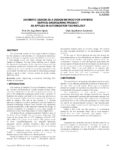
|
Axiomatic Design as a Design Method for a Hybrid Service Engineering Product as Applied In Automization Technology
Spath, D., Landwehr, R.
1st International Conference on Axiomatic Design, 2000
The automobile industry is the largest innovator (-Engine) for the producers and providers of automization technology. New technology is frequently used in this field for the first time. A wide-ranging survey was made amongst the leading car builders in Germany. The aim of the interview was to analyse the functional requirements of the customers. Subsequently the requirements stated were classified with axiomatic design. The emphasis of the survey was placed on product properties in the service field. The aim was to determine to what extent axiomatic design is suited to plan a service around an already existing physical product.
|
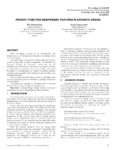
|
Product Function Independent Features in Axiomatic Design
Martensson, P., Fagerstrom, J.
1st International Conference on Axiomatic Design, 2000
When developing products to be manufactured, the products have to be designed and described considering means of manufacturing. Axiomatic Design captures the “function affecting features” of the product, that is, design parameters. As prescribed by Axiomatic Design the functional requirements on the manufacturing system is then developed in the process domain so independence is maintained in every step. This ensures that the means of manufacturing are capable to produce products with functions required by users without trouble-shooting in the manufacturing phase. However, parts may have features that are satisfying needs of the manufacturing process itself such as gripping surfaces and reference plans. This paper gives examples of different types of invisible DPs and ways of representing these during design.
|
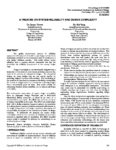
|
A Treatise On System Reliability and Design Complexity
Trewn, J., Yang, K.
1st International Conference on Axiomatic Design, 2000
The quality improvement process of reliability assessment and improvement is often a post design exercise that is traditionally practiced on the component level of products as a post design validation exercise. This article defines system reliability from a function delivery perspective that lays the foundation for reliability improvement in the concept design stage.
|
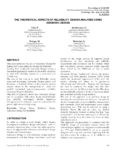
|
The Theoretical Aspects of Reliability Design Analysed Using Axiomatic Design
Citti, P., Arcidiancono, G., Delogu, M., Michelini, L.
1st International Conference on Axiomatic Design, 2000
This paper proposes the use of Axiomatic Design for dealing with issues related to Design for Reliability. Starting from traditional Axiomatic Design theory, a theoretical approach is studied which enables designers to deal with reliability aspects in a systematic and friendly way. The aim of this work is to study Reliability theory using and developing Axiomatic Design axioms and theorems. A Reliability Matrix is then used to analyze aspects related to the management of serial and parallel mechanical systems/components reliability (Axiomatic Design for Reliability). This kind of approach shows how Axiomatic Design can be integrated with other design methodologies (e.g. reliability techniques), thereby improving management and making it easier to understand the project right from the beginning.
|
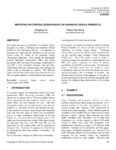
|
Improving An Existing Design Based on Axiomatic Design Principles
Liu, X., Soderborg, N.
1st International Conference on Axiomatic Design, 2000
This paper presents an application of axiomatic design principles to a Noise, Vibration, and Harshness (NVH) problem in the automotive industry. An approach is illustrated for improving the robustness of an existing system design by means of the axiomatic design “decoupling” philosophy. First, identify the relationship between functional requirements (FRs) and design parameters (DPs) in terms of percentage contribution of each DP to each functional response; then put these contribution values into a design matrix and rearrange the matrix to be as triangular as possible. The obtained matrix will demonstrate the relationship between FRs and DPs and guide engineers in making design improvements.
|
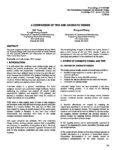
|
A Comparison of TRIZ and Axiomatic Design
Yang, K., Zhang, H.
1st International Conference on Axiomatic Design, 2000
This paper compares the Theory of Inventive Problem Solving (TRIZ) and Axiomatic Design (AD). Both AD and TRIZ are briefly reviewed and their possible similarities and relationships are analyzed and listed. A case study is given.
|
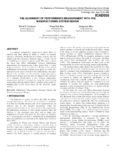
|
The Alignment of Performance Measurement With the Manufacturing System Design
Cochran, D. S., Kim, Y. S., Kim, J.
1st International Conference on Axiomatic Design, 2000
A company’s performance measurement system drives its behavior and thus, affects its ability to achieve its strategic objectives. Therefore, developing performance measures that are aligned with the enterprise objectives plays a crucial role in accomplishing a company’s long-term goals. This paper explains the cause and effect relationships between performance measurement and manufacturing system design from a system design perspective. As an example, it is illustrated why current performance measurement methods cause plans to evolve into mass production systems. Based on this understanding, this paper discusses the usefulness of the axiomatic design approach to develop performance measures that are aligned to the objectives of a company. Furthermore, a new strategic performance measurement method is proposed by using the manufacturing system design decomposition, which is a generic design model for manufacturing system design based on the axiomatic design method.
|
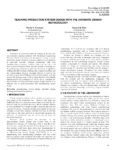
|
Teaching Production System Design With the Axiomatic Design Methodology
Cochran, D. S., Kim, Y. S.
1st International Conference on Axiomatic Design, 2000
Professors all across the world are striving to develop new and innovative teaching methods. MIT Mechanical Engineering Professor David S. Cochran has developed a course to teach production system design by exposing students to real problems in real-world factories. Through partnerships with local manufacturing companies, students learn how to solve real factory system design problems. Students benefit by learning, and the participating companies benefit from their ideas. A significant challenge for the students is defining the company’s problem and the corresponding solution. Axiomatic Design is used by the students to guide their thinking and the factory-system re-design process. By studying some of the projects that have been directly implemented by the companies, we will be able to conclude that this innovative teaching and factory-system design method is an effective way to teach production and manufacturing system design.
|
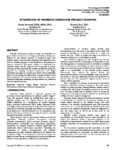
|
Integration of Axiomatic Design and Project Planning
Steward, D., Tate, D.
1st International Conference on Axiomatic Design, 2000
Software development projects require the translation of good abstract ideas into clear design specifications. Subsequent delivery of the software product in moderate-to-large scale projects requires effective project planning and assignments for a team of software engineers to meet deadlines in the presence of resource constraints. This paper explores the hypothesis that axiomatic design may be integrated into the process of project planning and task assignment for software development teams. An approach to mapping functional requirements and design parameters into tasks of a project plan Gantt chart is described. Effects of transferring the relationships of design matrices to task links are discussed. The result is considered by the authors to be a productive integration facilitating the rapid delivery of product by software engineering teams.
|
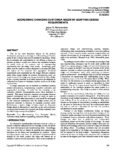
|
Addressing Changing Customer Needs By Adapting Design Requirements
Hintersteiner, J. D.
1st International Conference on Axiomatic Design, 2000
One of the most important aspects of the product development process is to develop an understanding of the true needs of the customer that must be satisfied by the design. While fine in principle, this understanding is very difficult to achieve in practice, as there is usually not a one-to-one correlation between the stated needs of the customer and the corresponding requirements that the design must satisfy. Accordingly, great effort must be made by product designers to translate the needs and desires of the customer into appropriate functional requirements and constraints for the design. Because customer needs often change during the product development cycle, the requirements of the design may change dynamically. For a design to be a success, therefore, it is vitally important for designers to understand the impact of changing customer needs on the design requirements.
|

|
Axiomatic Design of the Injection Molding Process
Kazmer, D. O.
1st International Conference on Axiomatic Design, 2000
Injection molded components are consistently designed to minimize the design and manufacturing information content of the enterprise system. The resulting designs, however, are extremely complex and frequently exhibit coupling between multiple quality attributes. Axiomatic design principles were applied to the injection molding process to add control parameters that enable the spatial and dynamic decoupling of multiple quality attributes in the molded part. There are three major benefits of the process redesign effort. First, closed loop pressure control has enabled tight coupling between the mass and momentum equations. This tight coupling allows the direct input and controllability of the melt pressure. Second, the use of multiple melt actuators provides for the decoupling of melt pressures between different locations in the mold cavity. Such decoupling can then be used to maintain functional independence of multiple quality attributes. Third, the heat equation has been decoupled from the mass and momentum equations. This allows the mold to be filled under isothermal conditions. Once the cavity(ies) are completely full and attain the desired packing pressure, then the cooling is allowed to progress.
|
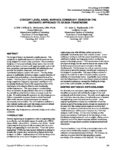
|
Concept Level Naval Surface Combatant Design in the Axiomatic Approach to Design Framework
Whitcomb, C. A., Szatkowski, J. J.
1st International Conference on Axiomatic Design, 2000
The design of ships is an inherently complex process. This complexity is significantly increased when the particular ship being designed is a naval surface combatant. Naval combatant designers, or more appropriately, design teams, must not only address the factors common to all seagoing vessels such as hull form, propulsion, and maneuverability, but additionally must consider the selection, placement, and interaction of sophisticated weapons systems and sensors. The ship design process is traditionally viewed as a highly coupled collection of interrelated physical attributes often determined in an ad hoc fashion. Therefore, lack of understanding and documenting the design progression frequently necessitates modification of a completely developed, functionally acceptable portion of the ship because of its adverse effect on other functionally unrelated parameters. This paper proposes a methodology based on axiomatic design principles that strives to eliminate the currently accepted iterative nature of concept level ship design. By implementing this approach, the ship design process follows a repeatable structured format in which functional relationships between physical parameters are mapped, documented, and controlled. The AAD method is applied to a ship synthesis model, and a new ship design process is defined and coded to illustrate the utility of the method.
|